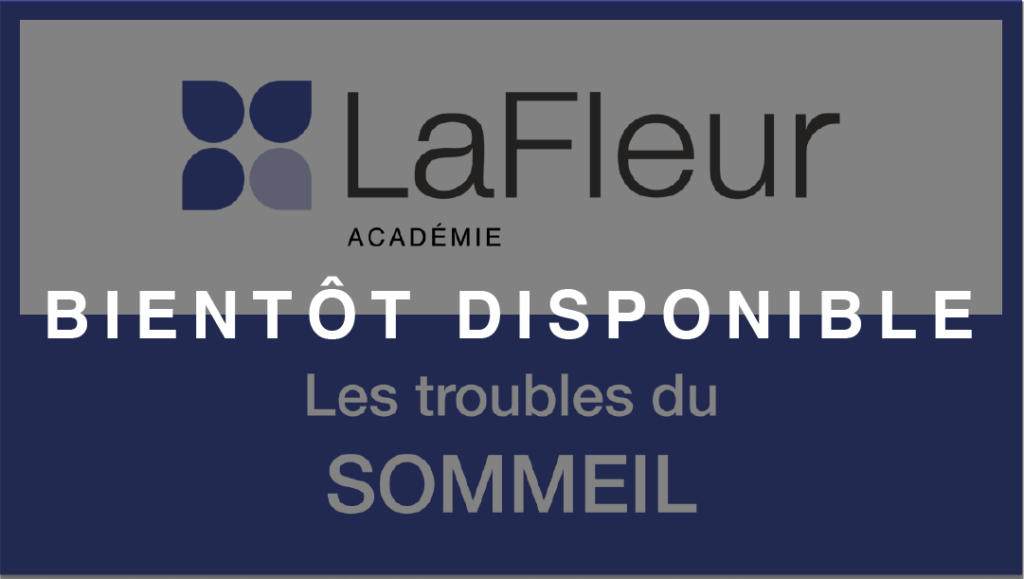Formation cannabis médical : Soins de support en oncologie et soins palliatifs
Parmi les indications autorisées du cannabis médical, en France dans le cadre de l’expérimentation mais aussi à l’étranger, figurent les soins de support en oncologie ainsi que les soins palliatifs.
Formation cannabis médical : Soins de support en oncologie et soins palliatifs
Parmi les indications autorisées du cannabis médical, en France dans le cadre de l’expérimentation mais aussi à l’étranger, figurent les soins de support en oncologie ainsi que les soins palliatifs.
Découvrez nos formations sur le cannabis médical
Dans ce chapitre, nous commencerons par définir les notions de soins de support en oncologie et de soins palliatifs. Nous évoquerons ensuite les symptômes-cibles que vise à soulager le cannabis médical dans ces indications, ainsi que quelques éléments bibliographiques en ce sens.
Bon visionnage !
Soins de support en oncologie et soins palliatifs
Sémantique
Les soins de support correspondent à l’ensemble des soins et soutiens nécessaires aux personnes malades, à la fois pendant et après la maladie.
Lorsque cette maladie est le cancer, on peut alors parler de soins de support en oncologie. Ils visent à améliorer la qualité de vie des patients en leur proposant, notamment, des solutions pour faire face à certains symptômes du cancer lui-même ou aux effets indésirables des traitements anticancéreux mis en place dans le but de traiter ce cancer.
Les soins palliatifs se concentrent sur l’amélioration de la qualité de vie et l’atténuation des symptômes chez les patients atteints de maladie graves, chroniques, incurables et associées à une forte mortalité.
Les soins palliatifs font donc partie des soins de support, lorsque ceux-ci s’adressent à des patients atteints de maladies incurables, évolutives et fréquemment mortelles. Qu’il s’agisse de cancer ou non.


Symptômes-cibles
Pour traiter de l’efficacité du cannabis médical dans les indications « soins de support en oncologie » et « soins palliatifs », nous vous proposons d’aborder le sujet à travers le prisme de 5 symptômes-cibles qui, suivant les différentes règlementations nationales, peuvent faire l’objet d’une prescription de cannabis médical. Ces 5 symptômes sont : les douleurs, les nausées et/ou les vomissements, la cachexie et/ou la perte d’appétit, les troubles du sommeil, ainsi que la nervosité et/ou l’anxiété.
Parfois, on peut trouver deux symptômes-cibles supplémentaires qui sont : la tristesse et la fatigue. La définition de ces symptômes peut varier selon les auteurs et ils sont généralement interconnectés avec les autres. Nous ne traiterons donc pas spécifiquement ces 2 symptômes complémentaires.
Bibliographie
AminiLari M, Wang L, Neumark S, et al. Medical cannabis and cannabinoids for impaired sleep: a systematic review and meta-analysis of randomized clinical trials. Sleep. 2022;45(2):zsab234. doi:10.1093/sleep/zsab234
Andrade AK, Renda B, Murray JE. Cannabinoids, interoception, and anxiety. Pharmacol Biochem Behav. 2019;180:60-73. doi:10.1016/j.pbb.2019.03.006
Agence Nationale de Sécurité du Médicaments et des produits de santé (ANSM). Formation Cannabis Médical destinée aux professionnels de santé. Presented at: 2021.
Banerjee R, Erridge S, Salazar O, et al. Real World Evidence in Medical Cannabis Research. Ther Innov Regul Sci. 2022;56(1):8-14. doi:10.1007/s43441-021-00346-0
Backes M. Cannabis Pharmacy: The Practical Guide to Medical Marijuana — Revised and Updated. Black Dog & Leventhal; 2017.
Bar-Lev Schleider L, Mechoulam R, Lederman V, et al. Prospective analysis of safety and efficacy of medical cannabis in large unselected population of patients with cancer. Eur J Intern Med. 2018;49:37-43. doi:10.1016/j.ejim.2018.01.023
Baron EP. Medicinal Properties of Cannabinoids, Terpenes, and Flavonoids in Cannabis, and Benefits in Migraine, Headache, and Pain: An Update on Current Evidence and Cannabis Science. Headache. 2018;58(7):1139-1186. doi:10.1111/head.13345
Bhattacharyya S, Morrison PD, Fusar-Poli P, et al. Opposite Effects of Δ-9-Tetrahydrocannabinol and Cannabidiol on Human Brain Function and Psychopathology. Neuropsychopharmacology. 2010;35(3):764-774. doi:10.1038/npp.2009.184
Beal JE, Olson R, Laubenstein L, et al. Dronabinol as a treatment for anorexia associated with weight loss in patients with AIDS. J Pain Symptom Manage. 1995;10(2):89-97. doi:10.1016/0885-3924(94)00117-4
Bonn-Miller MO, Boden MT, Bucossi MM, Babson KA. Self-reported cannabis use characteristics, patterns and helpfulness amongmedical cannabis users. Am J Drug Alcohol Abuse. 2014;40(1):23-30. doi:10.3109/00952990.2013.821477
Capano A, Weaver R, Burkman E. Evaluation of the effects of CBD hemp extract on opioid use and quality of life indicators in chronic pain patients: a prospective cohort study. Postgrad Med. 2020;132(1):56-61. doi:10.1080/00325481.2019.1685298
Hazekamp A, Ware MA, Muller-Vahl KR, Abrams D, Grotenhermen F. The Medicinal Use of Cannabis and Cannabinoids—An International Cross-Sectional Survey on Administration Forms. Journal of Psychoactive Drugs. 2013;45(3):199-210. doi:10.1080/02791072.2013.805976
Hammond S, Erridge S, Mangal N, Pacchetti B, Sodergren MH. The Effect of Cannabis-Based Medicine in the Treatment of Cachexia: A Systematic Review and Meta-Analysis. Cannabis Cannabinoid Res. 2021;6(6):474-487. doi:10.1089/can.2021.0048
Johnson JR, Burnell-Nugent M, Lossignol D, Ganae-Motan ED, Potts R, Fallon MT. Multicenter, double-blind, randomized, placebo-controlled, parallel-group study of the efficacy, safety, and tolerability of THC:CBD extract and THC extract in patients withintractable cancer-related pain. J Pain Symptom Manage. 2010;39(2):167-179. doi:10.1016/j.jpainsymman.2009.06.008
Karniol IG, Shirakawa I, Kasinski N, Pfeferman A, Carlini EA. Cannabidiol interferes with the effects of Δ9-tetrahydrocannabinol in man. European Journal of Pharmacology. 1974;28(1):172-177. doi:10.1016/0014-2999(74)90129-0
Kaul M, Zee PC, Sahni AS. Effects of Cannabinoids on Sleep and their Therapeutic Potential for Sleep Disorders. Neurotherapeutics. Published online February 12, 2021. doi:10.1007/s13311-021-01013-w
Kesner AJ, Lovinger DM. Cannabinoids, Endocannabinoids and Sleep. Front Mol Neurosci. 2020;13:125. doi:10.3389/fnmol.2020.00125
Kwiatkowska M, Parker LA, Burton P, Mechoulam R. A comparative analysis of the potential of cannabinoids and ondansetron to suppress cisplatin-induced emesis in the Suncus murinus (house musk shrew). Psychopharmacology (Berl). 2004;174(2):254-259. doi:10.1007/s00213-003-1739-9
Leung J, Chan G, Stjepanović D, Chung JYC, Hall W, Hammond D. Prevalence and self-reported reasons of cannabis use for medical purposes in USA and Canada. Psychopharmacology (Berl). 2022;239(5):1509-1519. doi:10.1007/s00213-021-06047-8
Linares IMP, Guimaraes FS, Eckeli A, et al. No Acute Effects of Cannabidiol on the Sleep-Wake Cycle of Healthy Subjects: A Randomized, Double-Blind, Placebo-Controlled, Crossover Study. Front Pharmacol. 2018;9:315. doi:10.3389/fphar.2018.00315
Linares IM, Zuardi AW, Pereira LC, et al. Cannabidiol presents an inverted U-shaped dose-response curve in a simulated public speaking test. Braz J Psychiatry. 2019;41(1):9-14. doi:10.1590/1516-4446-2017-0015
Machado Rocha FC, Stéfano SC, De Cássia Haiek R, Rosa Oliveira LMQ, Da Silveira DX. Therapeutic use of Cannabis sativa on chemotherapy-induced nausea and vomiting among cancer patients: systematic review and meta-analysis. Eur J Cancer Care (Engl). 2008;17(5):431-443. doi:10.1111/j.1365-2354.2008.00917.x
Meiri E, Jhangiani H, Vredenburgh JJ, et al. Efficacy of dronabinol alone and in combination with ondansetron versus ondansetronalone for delayed chemotherapy-induced nausea and vomiting. Curr Med Res Opin. 2007;23(3):533-543. doi:10.1185/030079907×167525
Mücke M, Weier M, Carter C, et al. Systematic review and meta-analysis of cannabinoids in palliative medicine. J CachexiaSarcopenia Muscle. 2018;9(2):220-234. doi:10.1002/jcsm.12273
Mun CJ, Nordeck C, Goodell EMA, et al. Real-Time Monitoring of Cannabis and Prescription Opioid Co-Use Patterns, AnalgesicEffectiveness, and the Opioid-Sparing Effect of Cannabis in Individuals With Chronic Pain. J Pain. 2022;23(11):1799-1810. doi:10.1016/j.jpain.2022.06.009
Narayan AJ, Downey LA, Manning B, Hayley AC. Cannabinoid treatments for anxiety: A systematic review and consideration of the impact of sleep disturbance. Neurosci Biobehav Rev. 2022;143:104941. doi:10.1016/j.neubiorev.2022.104941
Nicholson AN, Turner C, Stone BM, Robson PJ. Effect of Delta-9-tetrahydrocannabinol and cannabidiol on nocturnal sleep and early-morning behavior in young adults. J Clin Psychopharmacol. 2004;24(3):305-313. doi:10.1097/01.jcp.0000125688.05091.8f
Nielsen S, Sabioni P, Trigo JM, et al. Opioid-Sparing Effect of Cannabinoids: A Systematic Review and Meta-Analysis. Neuropsychopharmacology. 2017;42(9):1752-1765. doi:10.1038/npp.2017.51
Nielsen S, Picco L, Murnion B, et al. Opioid-sparing effect of cannabinoids for analgesia: an updated systematic review and meta-analysis of preclinical and clinical studies. Neuropsychopharmacology. 2022;47(7):1315-1330. doi:10.1038/s41386-022-01322-4
Portenoy RK, Ganae-Motan ED, Allende S, et al. Nabiximols for opioid-treated cancer patients with poorly-controlled chronic pain: arandomized, placebo-controlled, graded-dose trial. J Pain. 2012;13(5):438-449. doi:10.1016/j.jpain.2012.01.003
Russo EB. Taming THC: potential cannabis synergy and phytocannabinoid-terpenoid entourage effects. Br J Pharmacol. 2011;163(7):1344-1364. doi:10.1111/j.1476-5381.2011.01238.x
Russo EB, Guy GW, Robson PJ. Cannabis, pain, and sleep: lessons from therapeutic clinical trials of Sativex, a cannabis-basedmedicine. Chem Biodivers. 2007;4(8):1729-1743. doi:10.1002/cbdv.200790150
Sallan SE, Zinberg NE, Frei E. Antiemetic effect of delta-9-tetrahydrocannabinol in patients receiving cancer chemotherapy. N Engl J Med. 1975;293(16):795-797. doi:10.1056/NEJM197510162931603
Sharpe L, Sinclair J, Kramer A, de Manincor M, Sarris J. Cannabis, a cause for anxiety? A critical appraisal of the anxiogenic and anxiolytic properties. J Transl Med. 2020;18(1):374. doi:10.1186/s12967-020-02518-2
Solowij N, Broyd S, Greenwood LM, et al. A randomised controlled trial of vaporised Δ9-tetrahydrocannabinol and cannabidiol aloneand in combination in frequent and infrequent cannabis users: acute intoxication effects. Eur Arch Psychiatry Clin Neurosci. 2019;269(1):17-35. doi:10.1007/s00406-019-00978-2
Walsh JH, Maddison KJ, Rankin T, et al. Treating Insomnia Symptoms with Medicinal Cannabis: A Randomized, Cross-Over Trial of the Efficacy of a Cannabinoid Medicine Compared with Placebo. Sleep. 2021;(zsab149). doi:10.1093/sleep/zsab149
Whiting PF, Wolff RF, Deshpande S, et al. Cannabinoids for Medical Use: A Systematic Review and Meta-analysis. JAMA. 2015;313(24):2456-2473. doi:10.1001/jama.2015.6358
Zuardi AW, Rodrigues NP, Silva AL, et al. Inverted U-Shaped Dose-Response Curve of the Anxiolytic Effect of Cannabidiol duringPublic Speaking in Real Life. Front Pharmacol. 2017;8:259. doi:10.3389/fphar.2017.00259
Découvrir plus de formations sur le cannabis médical
LaFleur Académie se décompose en plusieurs chapitres que chacun peut regarder à son rythme.
Un résumé sous forme de « boite à outils » peut être téléchargé sous les vidéos de chaque chapitre, incluant les illustrations indispensables ainsi que les références bibliographiques utilisées.
